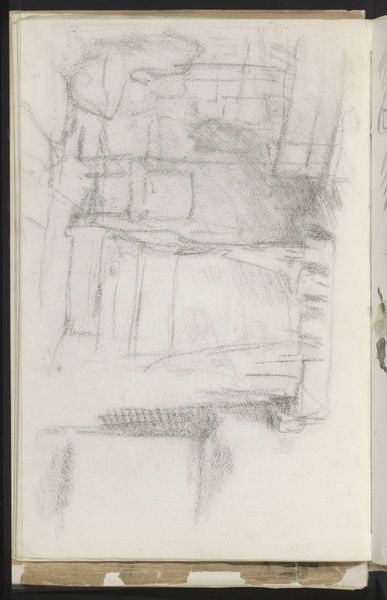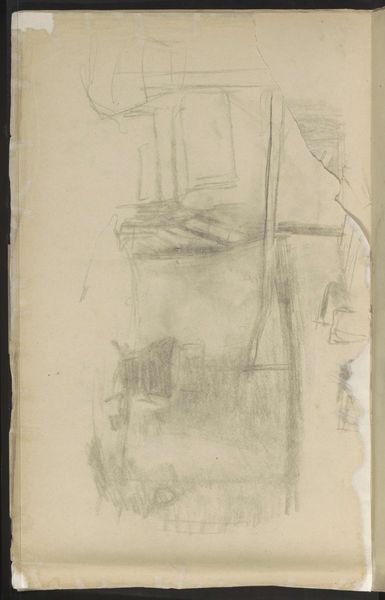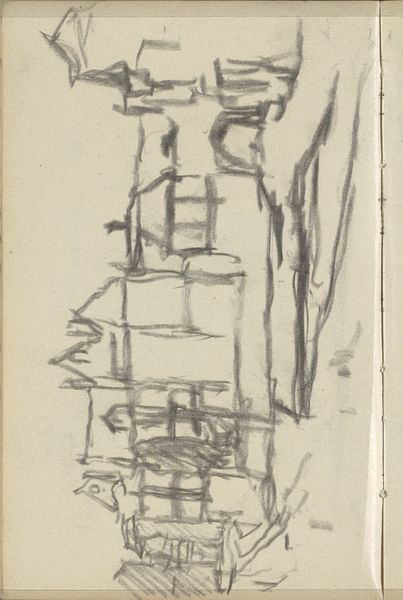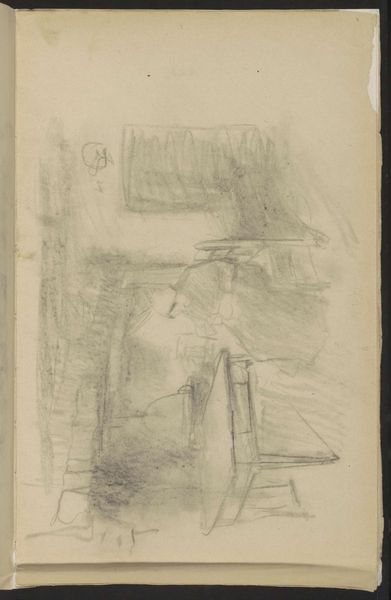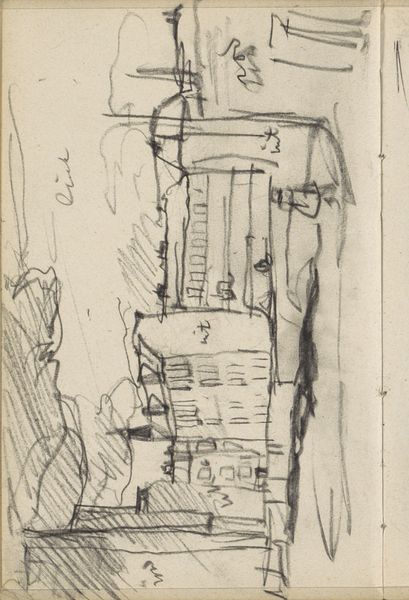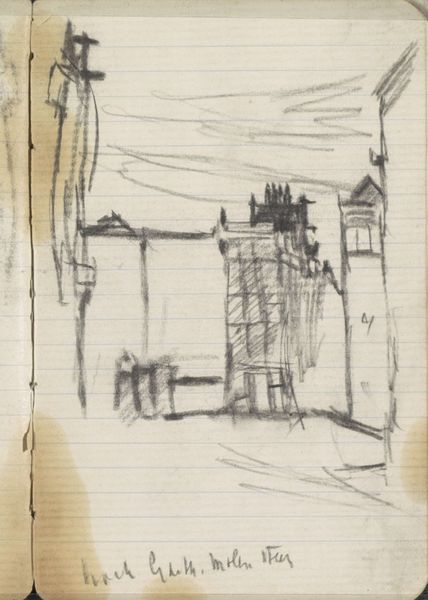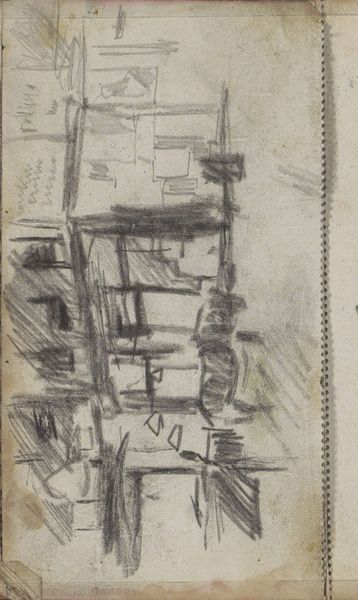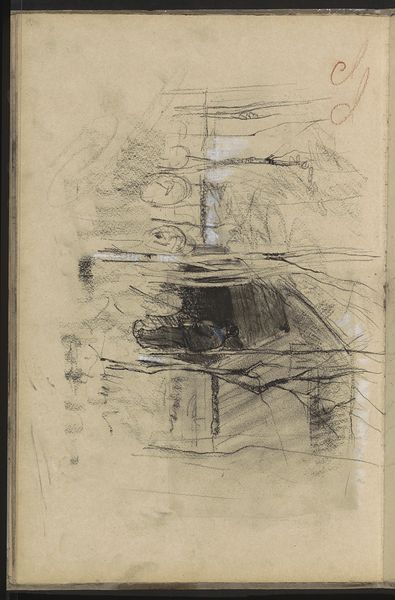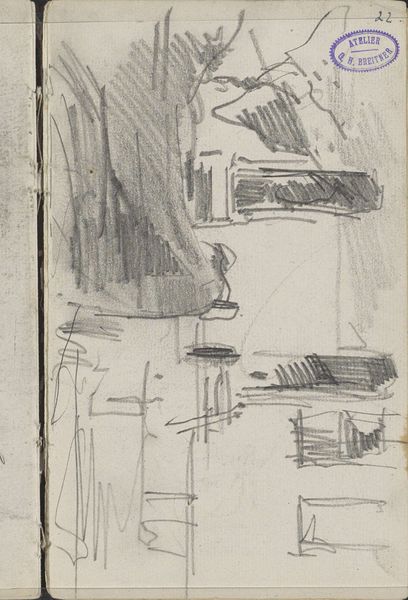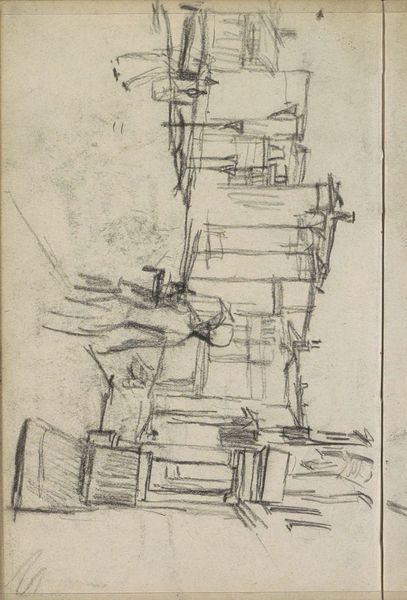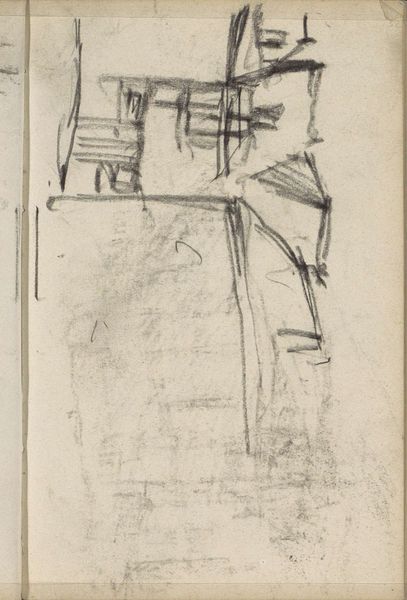
drawing, paper, pencil
#
drawing
#
paper
#
pencil
#
genre-painting
#
realism
Copyright: Rijks Museum: Open Domain
Editor: So, here we have "Boereninterieur," or "Farmers Interior," a pencil drawing on paper created sometime between 1854 and 1914 by Albert Neuhuys, housed right here at the Rijksmuseum. It's such a raw sketch; the roughness really speaks to me. What do you make of it? Curator: Well, considering Neuhuys's dedication to realism, we can see this not just as a simple drawing but as a document of its time. The peasant genre became quite popular in the 19th century. Think about the burgeoning art market: there was a romanticized, even idealized view of rural life, which sold very well to city dwellers during industrialization. Editor: Ah, so this is more than just an innocent depiction? Curator: Exactly. It plays into a complex web of social and economic relationships. Note how the light seems almost staged, almost picturesque despite its subject. To what extent does this represent a romantic longing by an urban audience for what it lacks in the metropolis? Do we really get an objective depiction, or a commodified stereotype for the burgeoning middle class? Editor: That's a perspective I hadn't considered. It’s eye-opening how a seemingly simple drawing can hold so much social weight. Curator: Indeed. And think about where we're standing—in the Rijksmuseum! An institution itself shaped by these social and cultural forces, selecting which narratives of national life get to be on display, which stories are remembered, and how they are valorized. What might be absent here and whose narratives are obscured? Editor: This really makes you rethink the role of museums and how we interact with art, especially regarding history. I’ll never see another 'simple' genre scene the same way.
Comments
No comments
Be the first to comment and join the conversation on the ultimate creative platform.
